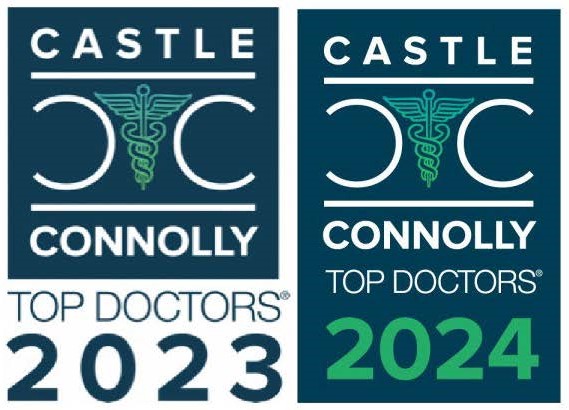
Finding effective relief for migraine sufferers can be challenging. Traditional treatments like medications, lifestyle changes, and invasive procedures often fall short and can come with significant side effects. This leaves many feeling hopeless and trapped in a cycle of pain.
But Transcranial Magnetic Stimulation (TMS) is a promising alternative for those who have exhausted other options and tired of researching. TMS offer positive results in reducing migraine frequency and severity. For individuals seeking new solutions, TMS might be your solution. It’s an innovative approach that could be the answer for many migraine sufferers.
What is TMS for Migraine?
Transcranial Magnetic Stimulation (TMS) is a non-invasive and FDA-Approved treatment that uses magnetic fields to stimulate nerve cells in the brain. It is originally developed to treat depression. But TMS has also shown promise in managing chronic migraines.
The treatment involves placing an electromagnetic coil against the scalp, which generates magnetic pulses that can modulate brain activity. TMS for migraine specifically targets areas of the brain associated with pain processing and headache generation. Aiming to reduce the frequency and severity of migraine attacks.
Mainly, migraines affect around 12% of the global population. And chronic migraines impact about 1-2% of people worldwide. Traditional migraine treatments include medications and lifestyle changes. And in some cases, Botox injections.
But for many, these treatments may not be effective or come with undesirable side effects. Luckily TMS offer an alternative that is drug-free, safe and well-tolerated. Making it an appealing option for patients looking for persistent migraine relief
How Does TMS Work for Migraine Relief?
TMS provides migraine relief through targeting and modulating neuronal activity in specific brain regions. The primary areas affected are the dorsolateral prefrontal cortex (DLPFC) and the primary motor cortex (M1). As these regions are directly involved in pain processing and migraine generation. Generally, TMS influences these areas to alter pain perception and reduce migraine symptoms.
- Modulation of Cortical Excitability: Migraines are often associated with abnormal cortical excitability. TMS can normalize this excitability by stimulating the brain’s neurons. Beyond that, studies have shown that TMS can reduce cortical spreading depression. A wave of neuronal and glial depolarization believed to be a key mechanism in migraine aura and headache.
- Pain Pathway Interruption: TMS can interrupt pain pathways by modulating the activity of neurons in the pain network of the brain. When targeting the motor cortex, TMS can influence the trigeminal nerve, which is often involved in migraine pain.
- Neuroplasticity: TMS promotes neuroplasticity. The brain’s ability to reorganize itself by forming new neural connections. It can help in altering the pain perception pathways and reducing the chronicity of migraines.
- Reduction of Neuroinflammation: Migraines are associated with neuroinflammation. TMS can reduce inflammation in the brain by modulating the activity of microglia (The brain’s primary immune cells). So this reduction in neuroinflammation can decrease the frequency and severity of migraine attacks.
Who Can Benefit from TMS for Migraine?
TMS for migraine relief can be beneficial for a specific group of patients who meet certain criteria.
Chronic Migraine Sufferers:
- Ideal candidates for TMS are those with chronic migraines. Specifically if you experience 15 or more headache days per month, with at least 8 being migraines.
Patients Unresponsive to Medications:
- Many migraine sufferers do not respond well to standard treatments, such as triptans or preventive medications. Or they may experience intolerable side effects.
- TMS offers a drug-free alternative with minimal side effects. Making it an attractive option for those who have exhausted other therapies.
Individuals with Contraindications to Medications:
- Moreover, some patients cannot take migraine medications due to underlying health conditions or interactions with other medications they are taking.
- TMS is an option that avoids the risks associated with systemic drug therapies.
Patients Seeking Non-Invasive Treatments:
- TMS is a non-invasive therapy. Meaning it does not involve surgery or injections,which appeals to patients who prefer less invasive treatment methods.
- The procedure is generally well-tolerated with few side effects. Such as mild headaches or scalp discomfort.
People Looking for Long-Term Relief:
- TMS has shown promise in providing long-term relief from migraines. Some studies indicate sustained benefits with regular sessions.
What Does the Research Say About TMS for Migraine?
Transcranial Magnetic Stimulation (TMS) has emerged as a promising non-invasive treatment for migraines, offering potential relief for patients who have not responded to conventional therapies.
Knowing the current evidence on TMS for migraines is necessary for both patients and healthcare providers.
Overview of Systematic Reviews
A comprehensive overview of systematic reviews assessed the efficacy of TMS in treating migraines. The analysis included studies sourced from reputable databases like PubMed, The Cochrane Library and Web of Science, among others.
The methodological quality of the reviews was evaluated using tools like AMSTAR-2 and the PRISMA checklist. Ensuring a rigorous examination of the evidence.
The overview analyzed seven systematic reviews, with mixed results regarding their quality. Four of these reviews were rated as moderate. While the remaining three were deemed low quality due to small sample sizes and high heterogeneity among the studies.
Despite these limitations, the findings suggested that TMS might reduce the severity and frequency of migraine attacks. Still the evidence remains inconclusive. Highlighting the need for more standardized studies to better understand TMS’s potential benefits and risks.
Deep Transcranial Magnetic Stimulation (Deep TMS) for Chronic Migraine
Deep TMS, a variant of traditional TMS, targets deeper brain regions and has shown promise in treating chronic migraines, particularly in patients resistant to standard treatments.
In a preliminary study 14 patients with treatment-resistant chronic migraines were randomly assigned to receive either add-on Deep TMS or continue with their standard antimigraine treatment. The Deep TMS group underwent 12 sessions over a month. Focusing on the dorsolateral prefrontal cortex (DLPFC), which is a brain region associated with pain modulation.
The results were encouraging. Patients receiving Deep TMS experienced a significant reduction in pain intensity, migraine attack frequency and the need for analgesics. Additionally, they reported fewer depressive symptoms. A common comorbidity in chronic migraine sufferers. Researchers suggest that Deep TMS could be a valuable adjunct to conventional migraine therapies. Offering hope for patients who have exhausted other options.
Effectiveness of High-Frequency Repetitive Transcranial Magnetic Stimulation (rTMS) in Migraine
Another study conducted a systematic review and meta-analysis to evaluate the effectiveness of high-frequency repetitive TMS (rTMS) in treating migraines. This study included eight randomized controlled trials (RCTs) with a total of 434 participants. All the trials targeted the left DLPFC with high-frequency rTMS.
The meta-analysis revealed that rTMS significantly reduced the frequency of migraine days by an average of 8.1 days per month compared to control groups. While the reduction in pain intensity was less pronounced, it still favored the rTMS group with an average decrease of 13.6 points on a 100-point scale.
Despite the promising results, substantial heterogeneity across studies suggests variability in treatment effects. This indicates that individual responses to rTMS may vary. And further research is needed to understand these differences. Overall, rTMS shows potential as a treatment for reducing migraine frequency and intensity.
How Does TMS Compare to Other Migraine Treatments?
As we can see, Transcranial Magnetic Stimulation (TMS) stands out as a promising alternative to traditional migraine treatments. Unlike common pharmaceutical treatments which often involve daily medications with potential side effects, TMS targets migraine symptoms directly at the neural level.
- Efficacy: Studies have shown that TMS can reduce the frequency of migraine headaches. This is a significant improvement compared to some traditional treatments where only some patients experience similar relief.
- Safety and Tolerability: TMS is well-tolerated with minimal side effects. Typically limited to mild discomfort at the treatment site. In contrast, many migraine medications can cause side effects such as dizziness, nausea or even more severe complications. Making TMS an attractive option for those who cannot tolerate these medications.
- Prophylactic Use:
High-frequency TMS is effective as a prophylactic treatment, preventing migraine attacks before they start. This approach is particularly beneficial for patients with chronic migraines. Also offers a preventive method rather than just providing symptomatic relief. - Comparison with Other Non-Invasive Treatments: Compared to treatments like Botox injections or nerve stimulation devices, TMS is a non-invasive alternative that avoids repeated injections or implants. It offers effective migraine relief. TMS can reduce both the frequency and intensity of migraines. Its a safer and less intrusive option for migraine management.
TMS offers a convincing alternative for those seeking a safe, effective and non-pharmaceutical approach to managing migraines. Consider scheduling a consultation with the TMS Institute of Arizona for your migraine. Our experienced team can help you find relief. Contact us.
Disclaimer: This content is for informational purposes only and not intended as medical advice. Please consult a healthcare professional for diagnosis and treatment. The TMS Institute of Arizona, led by a team of experienced doctors, is here to provide expert care and guidance. Contact us for a consultation.
References:
Burch, R. C., Buse, D. C., & Lipton, R. B. (2019). Migraine. Neurologic Clinics, 37(4), 631–649. https://doi.org/10.1016/j.ncl.2019.06.001
Mikhail Saltychev, & Juhola, J. (2022). Effectiveness of High-Frequency Repetitive Transcranial Magnetic Stimulation in Migraine. American Journal of Physical Medicine & Rehabilitation, 101(11), 1001–1006. https://doi.org/10.1097/phm.0000000000001953
Horovitz, N. (2018, December 23). A Study on Deep TMS For The Treatment of Chronic Migraine. BrainsWay. https://www.brainsway.com/knowledge-center/add-on-deep-transcranial-magnetic-stimulation-dtms-for-the-treatment-of-chronic-migraine-apreliminary-study/
Shen, M., Li, C., Wei, X., Zhang, L., Li, Y., Wu, H., Zhang, X., Dong, Z., Gao, S., Ma, Y., & Ma, Y. (2023). Transcranial Magnetic Stimulation as a Therapy for Migraine: An Overview of Systematic Reviews. Journal of Pain Research, Volume 16, 3133–3144. https://doi.org/10.2147/jpr.s416993













